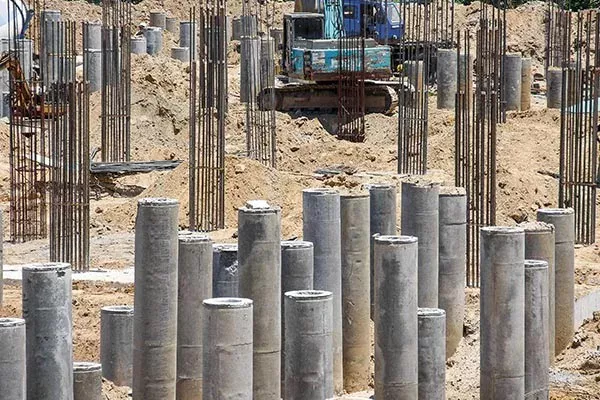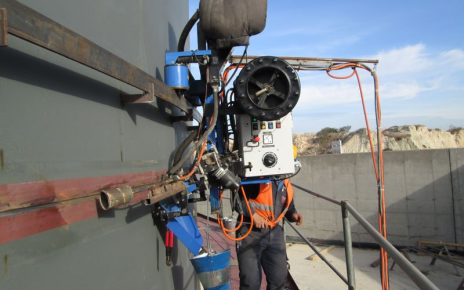Deep foundations represent a crucial element in modern construction, serving as the primary interface between superstructures and the underlying soil strata. These structural elements transfer immense loads from buildings, bridges, and other infrastructure into competent bearing layers deep beneath the surface. The intricate relationship between reinforcement design and foundation performance significantly influences structures’ long-term stability, safety, and durability, making it essential for engineers, contractors, and stakeholders to understand these fundamental concepts thoroughly.
Load transfer mechanisms
The behaviour of deep foundations involves complex interactions between structural elements and surrounding soil layers. These foundations primarily mobilize resistance through end bearing and skin friction mechanisms. End bearing develops at the foundation tip, where it contacts competent soil or rock layers, while skin friction is generated along the shaft’s surface through soil-structure interaction. The strategic placement of reinforcement within deep foundations facilitates the optimal distribution of these forces, ensuring uniform stress patterns and preventing concentrated stress zones that could potentially lead to structural vulnerabilities.
Steel configuration details

The reinforcement arrangement in deep foundations follows specific patterns designed to maximize structural effectiveness. Vertical bars, strategically positioned within the foundation element, provide primary resistance against axial forces and bending moments. Horizontal ties or spiral reinforcement ensure proper confinement of the concrete core while preventing buckling of longitudinal bars under heavy loading conditions. These reinforcement elements’ precise spacing and dimensioning emerge from detailed structural calculations considering soil properties, loading conditions, and regulatory requirements.
Key foundation solutions
Modern Foundation solutions incorporate sophisticated reinforcement systems tailored to address specific project demands and site conditions. Engineers carefully select and implement appropriate reinforcement details based on a comprehensive analysis of soil characteristics and anticipated structural loads. Integrating well-designed reinforcement patterns ensures optimal force distribution throughout the foundation system. Various configurations, including uniformly distributed arrangements, concentrated reinforcement zones, and specialized cage designs, serve distinct purposes within the foundation framework.
Concrete protection systems
The relationship between concrete cover and reinforcement protection significantly influences foundation durability. Adequate cover distances must account for soil aggressiveness, groundwater presence, and potential chemical exposure. The concrete mixture specifications and placement methodologies require careful attention to achieve proper consolidation around reinforcement elements. This symbiotic relationship between concrete and reinforcement creates a robust composite system capable of withstanding complex loading scenarios while maintaining structural integrity throughout its designed service life.
Seismic design elements
Foundations in seismic regions require specialized reinforcement configurations to resist dynamic loading conditions. The reinforcement layout must provide sufficient ductility to accommodate lateral movements while maintaining structural stability. Enhanced detailing often includes tighter spacing of transverse reinforcement near critical sections, increased longitudinal reinforcement ratios, and specialized connection details. These design considerations ensure adequate performance during seismic events by preventing brittle failure modes and maintaining structural continuity.
Force distribution networks
The effectiveness of load distribution within deep foundations relies heavily on proper engagement between various structural components. Primary vertical reinforcement manages axial forces and bending moments, while horizontal elements ensure proper confinement and shear resistance. Carefully coordinating reinforcement spacing and arrangement facilitates uniform load distribution, eliminating potential stress concentrations. These interconnected elements create a robust structural system capable of managing complex loading scenarios.
Compatibility requirements
Deep foundation reinforcement must maintain compatibility with various structural elements and soil conditions. The reinforcement types, sizes, and configurations selection considers factors such as soil corrosivity, chemical exposure, and long-term loading conditions. Special attention focuses on preventing adverse interactions between reinforcement and surrounding materials while ensuring optimal structural performance throughout the foundation’s service life.
The intricate relationship between reinforcement and deep foundations is fundamental in modern construction. Proper implementation of reinforcement principles ensures the long-term stability and performance of supported structures. The importance of well-designed reinforcement systems in deep foundations continues to rise as construction projects become more complex. As the backbone of reliable and efficient structural solutions, foundation engineering continues to support advanced construction capabilities.





